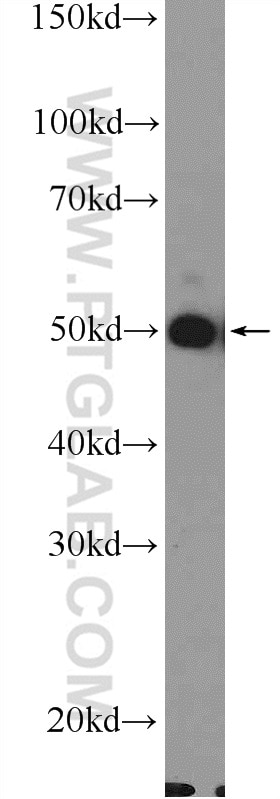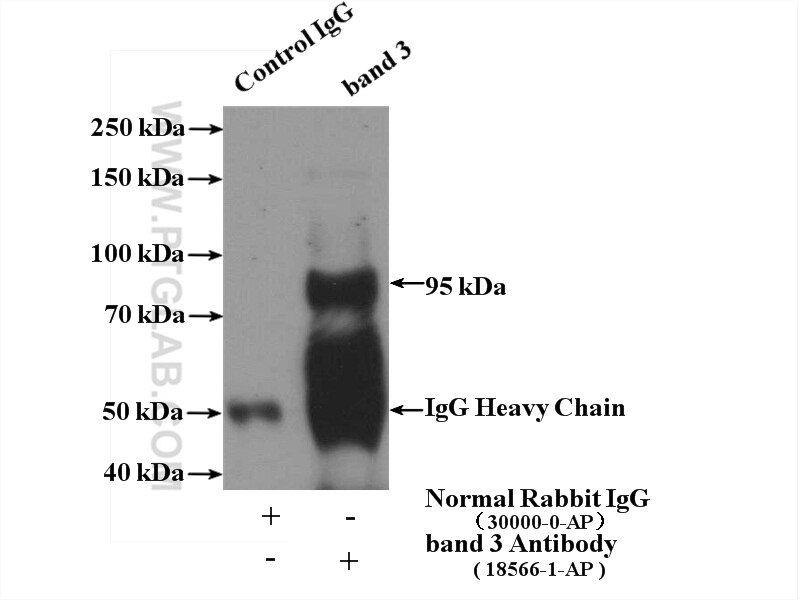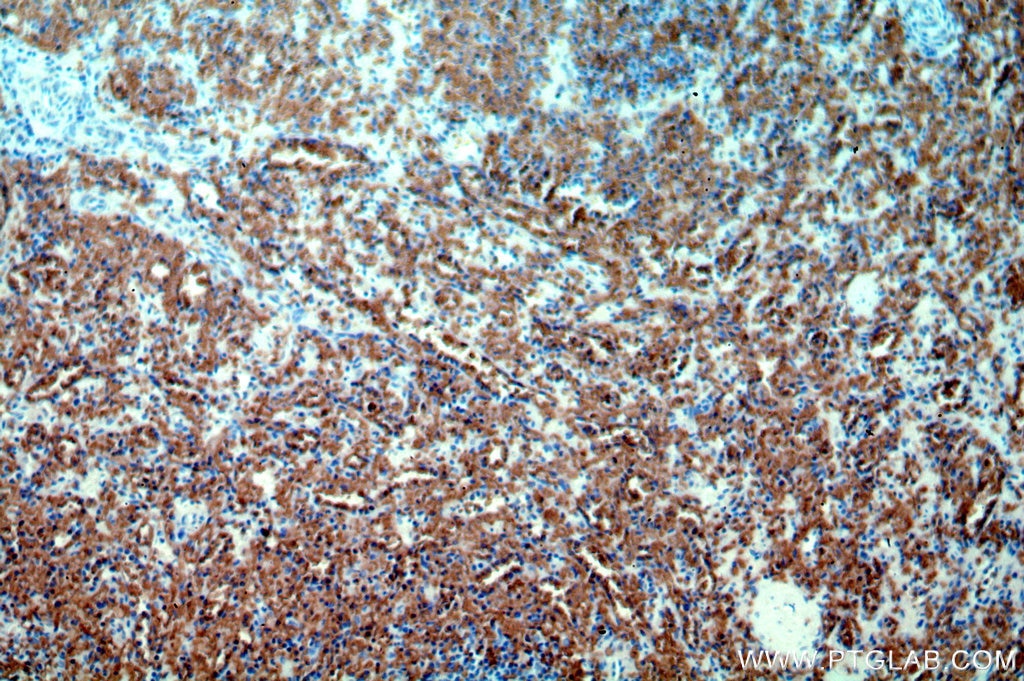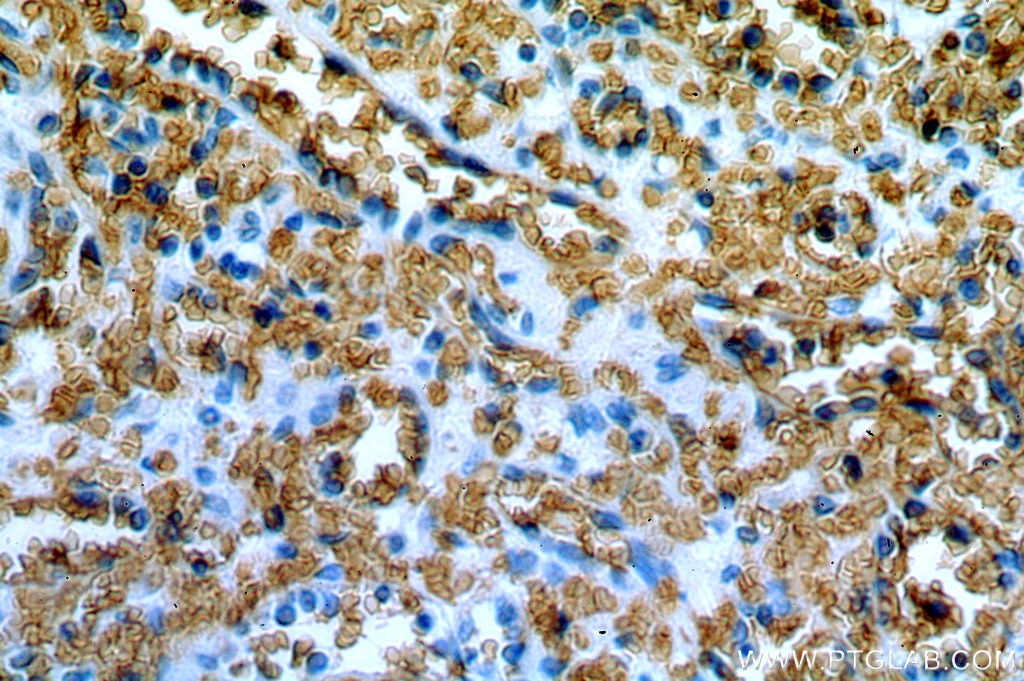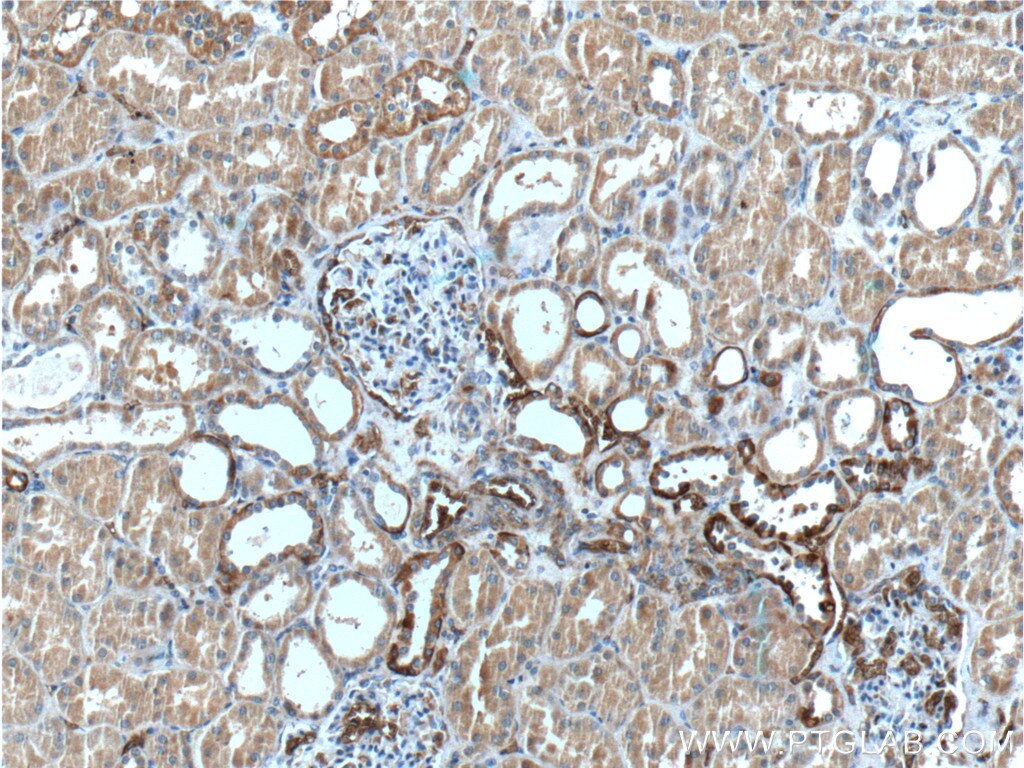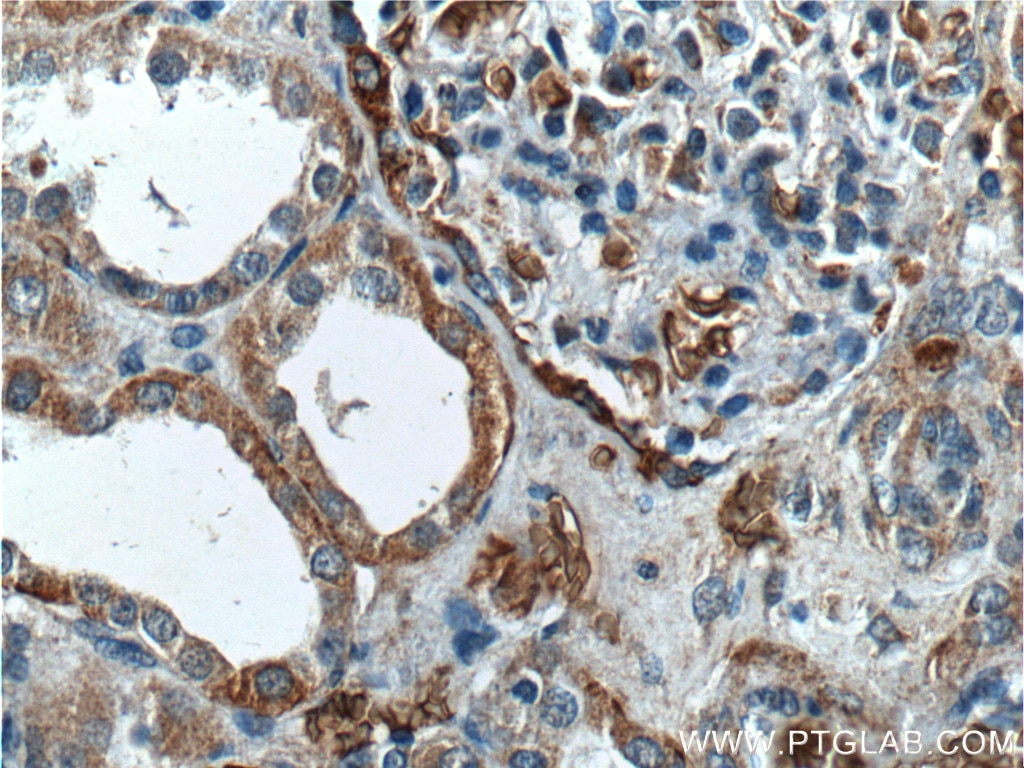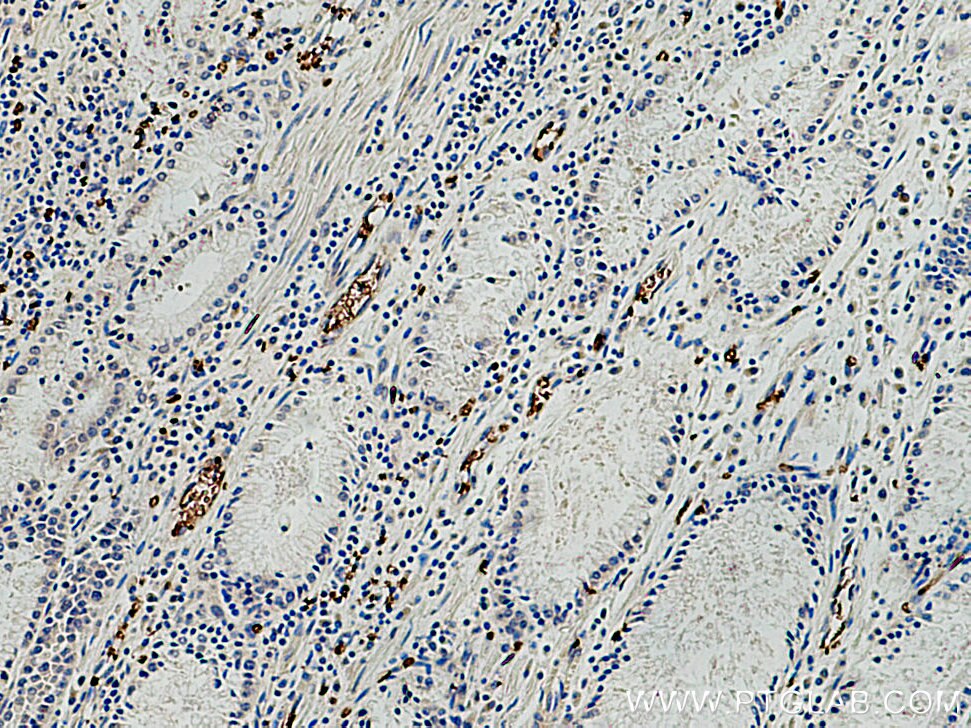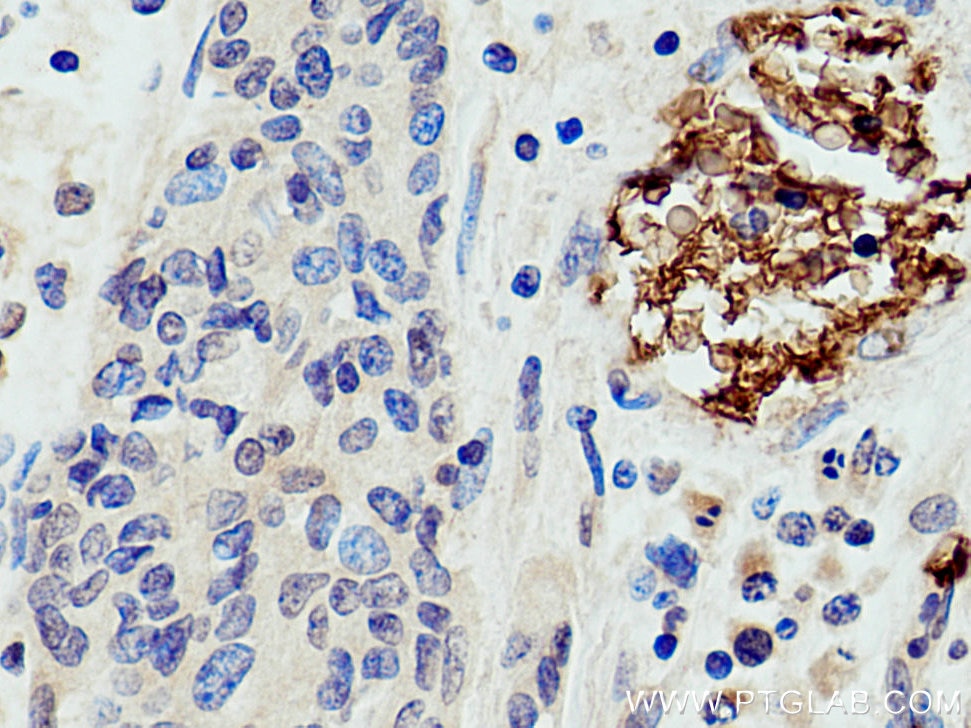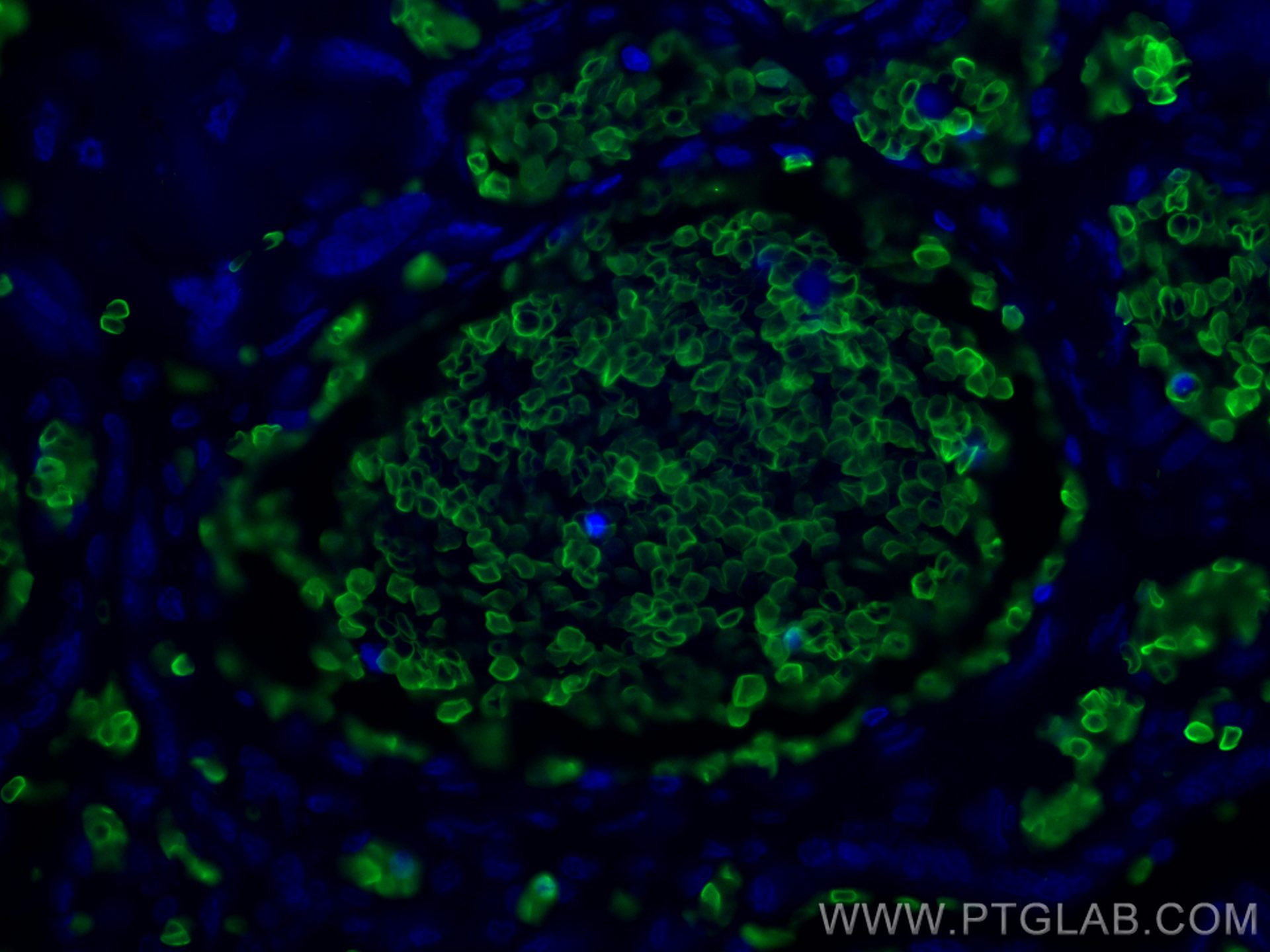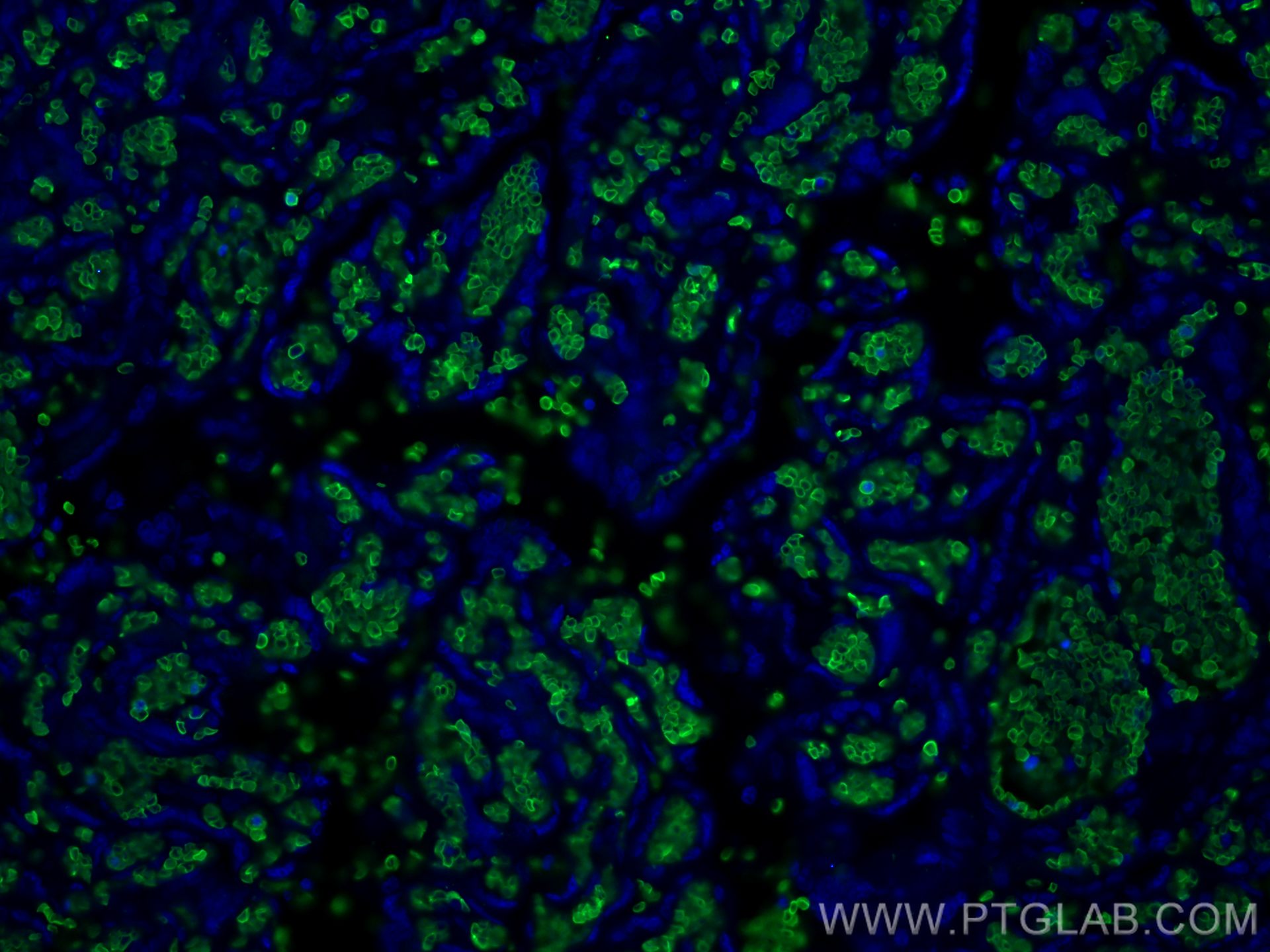Band 3/AE 1 Polyklonaler Antikörper
Band 3/AE 1 Polyklonal Antikörper für WB, IHC, IF-P, IP, ELISA
Wirt / Isotyp
Kaninchen / IgG
Getestete Reaktivität
human, Maus, Ratte und mehr (1)
Anwendung
WB, IHC, IF-P, IP, ELISA
Konjugation
Unkonjugiert
Kat-Nr. : 18566-1-AP
Synonyme
Geprüfte Anwendungen
| Erfolgreiche Detektion in WB | HepG2-Zellen |
| Erfolgreiche IP | Mauslebergewebe |
| Erfolgreiche Detektion in IHC | humanes Milzgewebe, humanes Nierengewebe, humanes Magenkrebsgewebe Hinweis: Antigendemaskierung mit TE-Puffer pH 9,0 empfohlen. (*) Wahlweise kann die Antigendemaskierung auch mit Citratpuffer pH 6,0 erfolgen. |
| Erfolgreiche Detektion in IF-P | humanes Plazenta-Gewebe |
Empfohlene Verdünnung
| Anwendung | Verdünnung |
|---|---|
| Western Blot (WB) | WB : 1:200-1:1000 |
| Immunpräzipitation (IP) | IP : 0.5-4.0 ug for 1.0-3.0 mg of total protein lysate |
| Immunhistochemie (IHC) | IHC : 1:20-1:200 |
| Immunfluoreszenz (IF)-P | IF-P : 1:50-1:500 |
| It is recommended that this reagent should be titrated in each testing system to obtain optimal results. | |
| Sample-dependent, check data in validation data gallery | |
Veröffentlichte Anwendungen
| WB | See 4 publications below |
| IHC | See 2 publications below |
| IF | See 1 publications below |
Produktinformation
18566-1-AP bindet in WB, IHC, IF-P, IP, ELISA Band 3/AE 1 und zeigt Reaktivität mit human, Maus, Ratten
| Getestete Reaktivität | human, Maus, Ratte |
| In Publikationen genannte Reaktivität | human, Maus, Ratte, Plasmodium falciparum |
| Wirt / Isotyp | Kaninchen / IgG |
| Klonalität | Polyklonal |
| Typ | Antikörper |
| Immunogen | Band 3/AE 1 fusion protein Ag13076 |
| Vollständiger Name | solute carrier family 4, anion exchanger, member 1 (erythrocyte membrane protein band 3, Diego blood group) |
| Berechnetes Molekulargewicht | 911 aa, 102 kDa |
| Beobachtetes Molekulargewicht | 95 kDa, 50 kDa |
| GenBank-Zugangsnummer | BC101570 |
| Gene symbol | band 3 |
| Gene ID (NCBI) | 6521 |
| Konjugation | Unkonjugiert |
| Form | Liquid |
| Reinigungsmethode | Antigen-Affinitätsreinigung |
| Lagerungspuffer | PBS with 0.02% sodium azide and 50% glycerol |
| Lagerungsbedingungen | Bei -20°C lagern. Nach dem Versand ein Jahr lang stabil Aliquotieren ist bei -20oC Lagerung nicht notwendig. 20ul Größen enthalten 0,1% BSA. |
Hintergrundinformationen
Anion exchanger 1 (AE1), also known as band 3, is a 95-100 kDa transmembrane glycoprotein which is abundantly expressed in erythrocyte plasma membrane and mediates the electroneutral exchange of Cl- and HCO3-. It contains a 52-55 kDa C-terminal membrane crossing domain and a 43 kDa N-terminal cytoplasmic domain. Degradation of band 3 protein occurred during erythrocyte aging. The oxidative stress can also activate the proteolysis of band 3 through caspases. This antibody is expected to recognize the intact band 3 (95-100 kDa) and various degradation products (38-60 kDa). (PMID: 22890269, 29240292, 28130418)
Protokolle
| PRODUKTSPEZIFISCHE PROTOKOLLE | |
|---|---|
| WB protocol for Band 3/AE 1 antibody 18566-1-AP | Protokoll herunterladen |
| IHC protocol for Band 3/AE 1 antibody 18566-1-AP | Protokoll herunterladenl |
| IF protocol for Band 3/AE 1 antibody 18566-1-AP | Protokoll herunterladen |
| IP protocol for Band 3/AE 1 antibody 18566-1-AP | Protokoll herunterladen |
| STANDARD-PROTOKOLLE | |
|---|---|
| Klicken Sie hier, um unsere Standardprotokolle anzuzeigen |
Publikationen
| Species | Application | Title |
|---|---|---|
Blood Ferroportin deficiency in erythroid cells causes serum iron deficiency and promotes hemolysis due to oxidative stress. | ||
Sci Adv Red blood cell-derived nanoerythrosome for antigen delivery with enhanced cancer immunotherapy. | ||
J Proteome Res Proximity Proteomics Has Potential for Extracellular Vesicle Identification. | ||
Stem Cells Int Pyridoxal-5'-Phosphate Promotes Immunomodulatory Function of Adipose-Derived Mesenchymal Stem Cells through Indoleamine 2,3-Dioxygenase-1 and TLR4/NF-κB Pathway. | ||
PLoS One Mechanisms that determine the internal environment of the developing brain: a transcriptomic, functional and ultrastructural approach. | ||
Front Neurosci Influx mechanisms in the embryonic and adult rat choroid plexus: a transcriptome study. |
